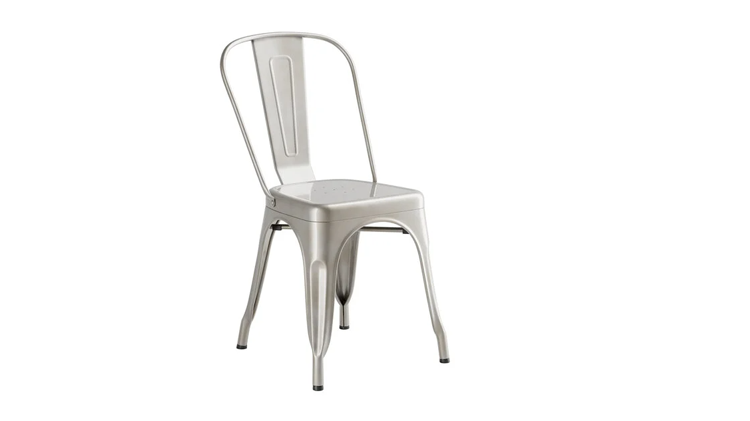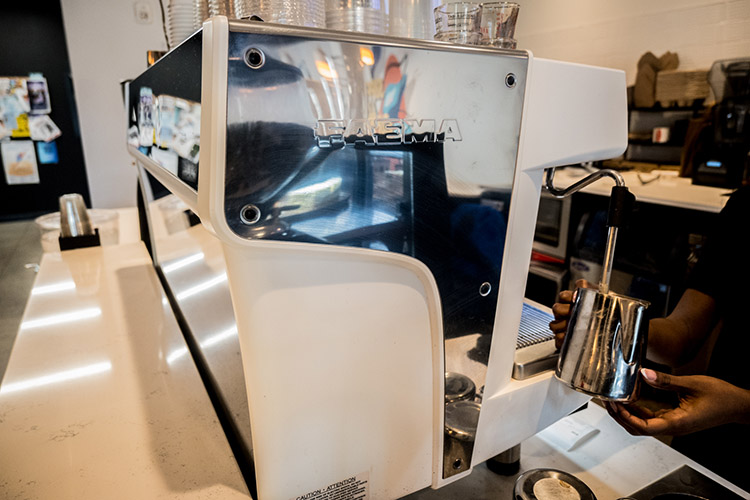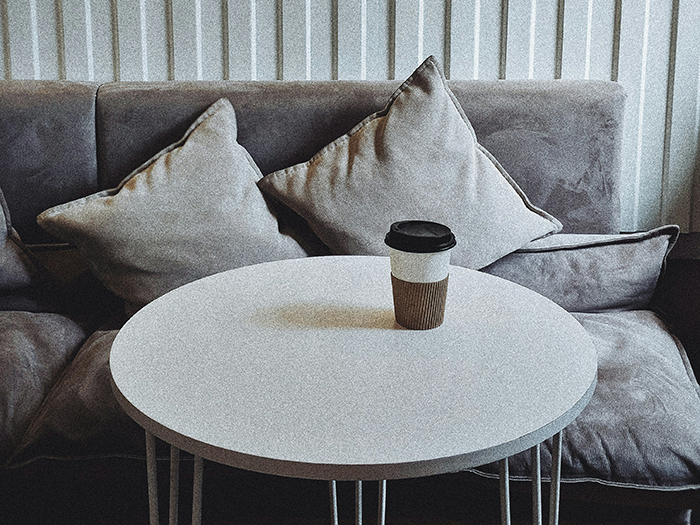Something happened to coffee shops sometime in the last decade and a half or so. I’m not sure when, but I have some ideas why. But for now, let’s talk about what:
The couches are gone. And with them, the coffee shop culture that I and, perhaps if you are reading this you, once loved.
The couches used to be a fixture of the coffee shop well into the late 00s. They encouraged us to sit for a bit. Not to work, mind you. But to indulge. To take a little time to chat with a friend, read a book, or scroll the internet — often when work was what you were supposed to be doing instead.
The coffee shop of the 2020s exists in stark contrast to this cozy archetype. Couches have been replaced by hard aluminum minimalist chairs and tables. Like, the same chairs. Everywhere.

Why?
The charitable explanation is that harder furniture such as those omnipresent chairs is better for sitting upright and working on a laptop or other device. But there are issues to point out even with the most charitable explanation — which we’ll get to in a bit.
The more cynical explanation is that modern coffee shops aren’t designed to be conducive to lounging around because the algorithms don’t want them to be. In the age of optimizing absolutely everything for efficiency, soft furniture that invites you to recline and relax for a few hours takes up space that could otherwise be occupied by someone who drops in for a latte and bangs out a few emails.
Simply put: in the food and beverage space, comfort and coziness are just plain inefficient.
From Third Place to Workplace
Back to the couches and what they are — and aren’t — conducive to.
It wasn’t that long ago that the mainstream understanding of the “vibe” a coffee shop was supposed to have was one of community and socialization — and for the less social among us, at least chill. Just watch any media from before 2010 that has a scene or more that takes place in a coffee shop. You’ll undoubtedly find extras in the background lounging around, talking to each other, and in general being leisurely.
How out of place would that look today?
Coffee shops used to be the definitive “third place” — an obnoxious term coined by marketers that we’ve all settled on to describe places between home and work. Third places are supposed to be refuges from our first and second places. Places that allow us to step away from the demands of our lives and do something, anything else.
But I would argue that the coffee shops of 2024 are anything but what these third places are supposed to be. More than a decade and a half deep into the age of wifi and smartphone proliferation, coffee shops have transitioned from third place to just another workplace. An extension of the office. That trend has now been kicked into hyperdrive as remote work has become increasingly mainstream.
Step into a coffee shop today and the warm, organic murmur of quiet conversation has been drowned out — if not completely replaced — by the clacking of keyboards and the occasional business call.

Photo by: David Straughan
What used to be a place whose soundscape could almost be described as “ASMR-esque” with a pleasant blend of human voices, steam wands, and whatever the baristas decided you were going to listen to is now a place that sounds like your average open floor plan office mid-morning — albeit one with an espresso machine.
Bring Back the Couches
By 2024, this new version of coffee culture has been firmly in place for around a decade — and even longer for those of you living in the future in big cities. There are now multiple generations of coffee drinkers who probably haven’t known anything else. And it’s quite possible that there are those of you out there who actually like the way things are now.
The coffee shop as a remote workplace and source of an increasingly-specialized commodity has obviously been successful. If it weren’t, it wouldn’t be the near-hegemonic business model we see today. Similarly, the explosion of home coffee equipment and self-assumed professionalism has gone the way it has because people have shown that they will engage. I might not like it, but from some angles it sure looks like the people have spoken.
Transforming coffee shops into offices has made them more efficient as profit generators, especially as work moves increasingly out of the office and into what used to be third spaces. And like any other industry, the more specialized and niche things get, the more products you have to sell and the more you can charge for them.
That’s also not to say that coffee shop visitors haven’t benefited. The whole reason coffee shops became remote workspaces is that they are genuinely very nice places to sit for a few hours. Or they were, anyway. They’re still ostensibly nice places to sit and work, but when a shop is filled with people working, I would argue that they no longer function as places of leisure.
I try to avoid making value judgments around these types of things. This change isn’t bad in any objective sense, but it’s not good either.
The most accurate thing for me to say is that I just miss what we used to have in coffee culture. I miss having somewhere I could get away from screens and email and keyboards and very serious phone calls. I miss not feeling like I was interrupting someone’s workflow by talking with my friend over an espresso.
I am thankful that I became interested in coffee when knowing how to tamp properly and measure shots was enough to get you in the door and into a space where you could take the time to learn the rest on your own. And for those of you who didn’t have that opportunity, I miss that for you.
I don’t miss how wretched your average cup of coffee used to taste, nor do I miss macho culture making people afraid to drink lattes — which we have all rightfully recognized are indeed delicious. I don’t miss not having the world of options we have at our fingertips today.
But I do miss what we seem to have lost in the process.


